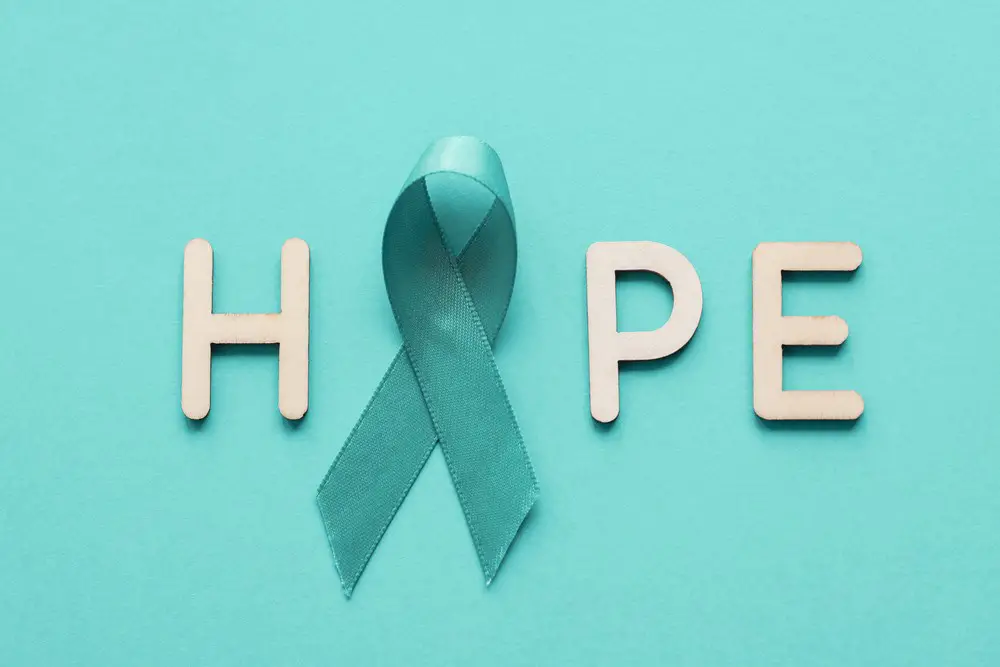As a BetterHelp affiliate, we receive compensation from BetterHelp if you purchase products or services through the links provided
Child sexual abuse (CSA) is a disturbing and traumatic experience that affects a significant number of individuals worldwide. As a CSA survivor, it’s essential to understand that you’re not alone and that healing is possible. Various coping mechanisms and resources are available to support you throughout your journey.
Coming to terms with what happened and overcoming feelings of shame and guilt can be challenging, but opening up about your experience can be a crucial step toward healing and empowerment. Moreover, this journey might involve exploring ways to build a safe environment and effectively navigate legal challenges if you choose.
Key Takeaways
- Coping mechanisms and resources exist to help survivors heal and rebuild their lives.
- Speaking out about child sexual abuse can empower survivors and contribute to their healing process.
- Understanding the role of parents and the broader society in CSA prevention can help create safer environments for all children.

Understanding CSA
Child sexual abuse (CSA) is a deeply traumatic experience that affects many children and adults. You must understand the effects of CSA to support survivors and help build a more informed society.
When discussing CSA, it’s important to acknowledge that it includes many behaviors. These can range from unwanted touching or exposure to explicit materials to more severe forms of abuse, such as rape and sexual assault. Awareness of the range of actions that constitute CSA helps ensure that all survivors’ experiences are recognized and validated.
Impact of CSA
Psychological Effects
The impact of CSA on a survivor’s mental health is profound. As a victim, you might struggle with depression, anxiety, and C-PTSD or PTSD. Traumatic experiences from childhood can lead to a variety of mental health issues. Recognizing these psychological injuries and seeking professional help when necessary is essential.
Key takeaway: Psychological effects of CSA can include depression, anxiety, and C-PTSD /PTSD, making it vital to seek professional help.
Physical Repercussions
CSA’s trauma doesn’t only affect your mental health – it can also cause physical harm. Survivors may suffer from sexual dysfunction, eating disorders, chronic pelvic pain, gastrointestinal symptoms, obesity, and even fibromyalgia. These health problems can persist for years and disrupt everyday life. It’s crucial to address these symptoms through appropriate medical care.
Key takeaway: Don’t ignore the physical repercussions of CSA – seek medical help to manage these health issues.
Interpersonal Effects
The trauma of CSA can also alter how you interact with others. Adult survivors may struggle with trust, intimacy, and vulnerability and display promiscuity. These interpersonal effects make maintaining healthy relationships with friends, family, and romantic partners difficult. Working on these issues is important to build and maintain connections with the people around you.
Key takeaway: CSA affects interpersonal relationships – work on trust, vulnerability, and communication skills for healthier connections.
Long-Term Effects
CSA’s impact can be long-lasting, with adult survivors facing various personal, social, and professional challenges. Notably, those who have experienced CSA may face socioeconomic disadvantages to their peers. Overcoming these long-term effects requires resilience and perseverance. Remember that seeking support from friends, family, and professionals can help mitigate these adverse outcomes.
Key takeaway: Long-term effects of CSA are real – be proactive and resilient, and don’t hesitate to ask for help when needed.
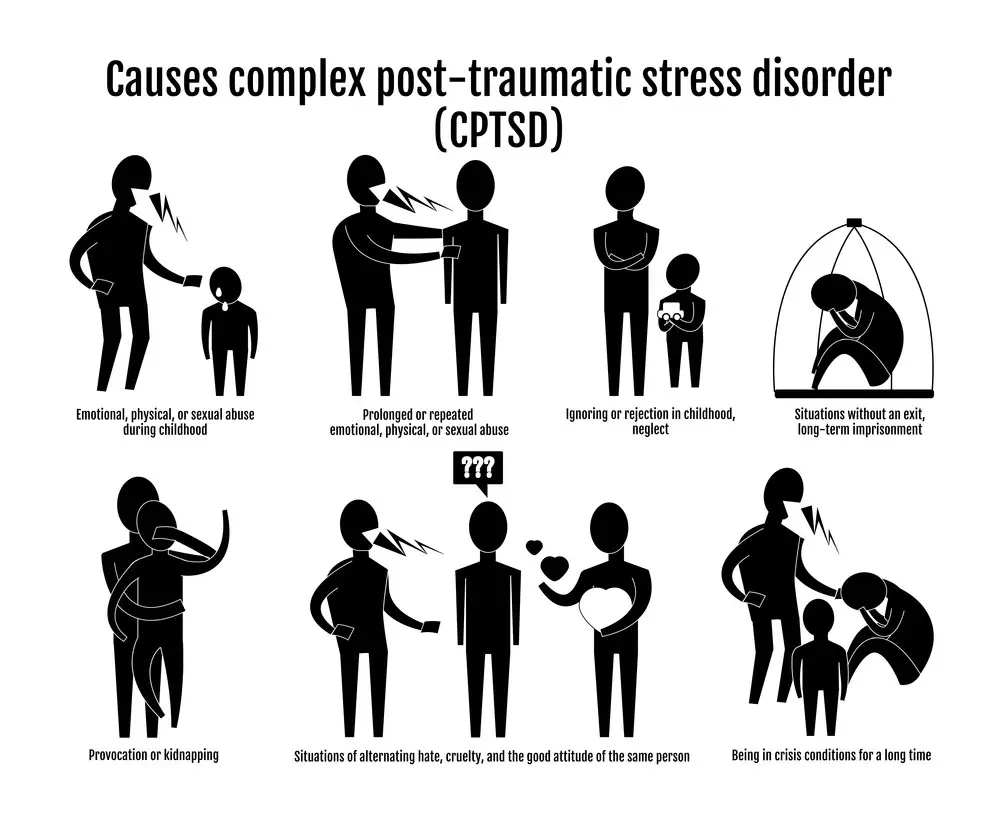
Decoding Trauma: Understanding the Nuances of PTSD and C-PTSD in CSA Survivors
Understanding the difference between PTSD (Post-Traumatic Stress Disorder) and C-PTSD (Complex Post-Traumatic Stress Disorder) is crucial, especially when recognizing and treating the trauma CSA survivors face.
PTSD:
- Triggered by a Single Event: This usually stems from a singular traumatic experience, such as an accident, natural disaster, or isolated act of violence.
- Symptoms: Classic symptoms include flashbacks, avoidance of trauma reminders, increased arousal (like being overly alert or jittery), and mood changes.
- Treatment: Treatments often include cognitive-behavioral therapy (CBT), medication, and exposure therapy.
C-PTSD:
- Long-Term Trauma: This often results from sustained abuse or neglect over a long period, making it more likely for CSA survivors.
- Symptoms: It shares many symptoms with PTSD but includes additional elements like emotional dysregulation, negative self-perception, and relationship difficulty.
- Treatment: More complex to treat and often involves therapies designed to improve emotional regulation and change negative thought patterns, such as Dialectical Behavior Therapy (DBT) or Eye Movement Desensitization and Reprocessing (EMDR).
CSA Survivors: Which One?
CSA survivors are generally more likely to experience C-PTSD due to the nature of the abuse, which is often prolonged and occurs during formative years. The impact extends beyond the specific traumatic events to shape one’s sense of self, worldview, and ability to form relationships. The sustained and deeply personal nature of CSA makes the complex symptoms of C-PTSD more prevalent among survivors.
Key Takeaways:
- PTSD and C-PTSD involve traumatic stress, but C-PTSD is more complex and often stems from prolonged abuse.
- CSA survivors are more likely to experience C-PTSD due to the ongoing and developmental nature of the abuse.
- Different therapeutic approaches are needed for PTSD and C-PTSD, emphasizing the importance of accurate diagnosis and tailored treatment.
If you or someone you know is a CSA survivor, it’s essential to consult with healthcare providers with trauma expertise for a comprehensive diagnosis and treatment plan.
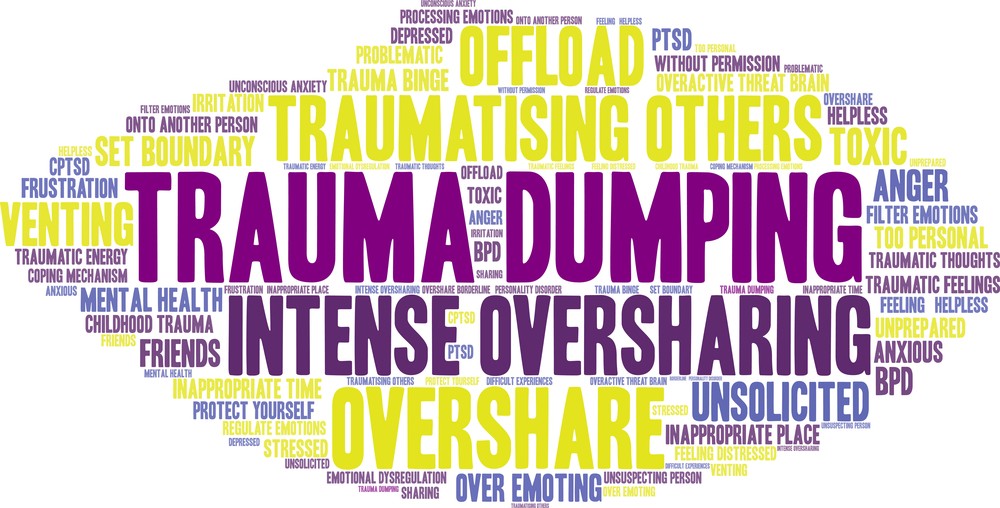
Navigating the Emotional Waters: The Dos and Don’ts of Discussing CSA Trauma with Others
Discussing trauma, especially something as sensitive as child sexual abuse (CSA), requires great care. Survivors often need to share their experiences, but it’s important to remember that how this information is shared matters for the survivor and the person they’re confiding in. This brings us to the topic of “trauma dumping.”
What is Trauma Dumping in the Context of CSA?
In the realm of CSA, trauma dumping happens when a survivor impulsively shares their traumatic experiences without first gauging whether the listener is emotionally prepared or willing to engage in such a heavy conversation.
Why is it Especially Delicate for CSA Survivors?
- Intense Emotional Weight: The trauma from CSA is particularly heavy and can trigger strong emotional reactions in the survivor and the listener.
- Potential for Re-traumatization: Discussing details impulsively can inadvertently retraumatize the survivor or even trigger latent traumas in the listener.
Ethical Sharing: Striking a Balance
So, how can a CSA survivor talk about their experience without inadvertently trauma dumping? Here are some suggestions:
- Check for Consent: Preface the conversation with a trigger warning and ask if the person is willing and able to discuss sensitive topics related to CSA.
- Mind the Timing and Setting: Choose an appropriate moment and place where both parties can speak freely and safely.
- Consider the Relationship: Evaluate whether your relationship with the listener is one where sharing such personal and sensitive information is appropriate.
Receiving Trauma: A Word to the Listener
If you find yourself on the receiving end of trauma dumping from a CSA survivor, setting boundaries is okay if you’re not equipped to handle it. Being empathetic yet honest is key. Saying something like, “I care for you deeply, but I’m not qualified to provide the help you need,” is perfectly valid.
Key Takeaways:
- Trauma dumping is especially sensitive regarding CSA due to the nature of the trauma and the potential emotional toll on both parties.
- Asking for consent and choosing an appropriate setting can help make sharing less overwhelming for everyone involved.
- Listeners also have the right to set boundaries and should do so if they feel they can’t appropriately support the survivor.
The goal isn’t to silence survivors but to foster respectful and empathetic dialogue that aids the healing process for everyone involved.
 Coping Mechanisms for Survivors
Coping Mechanisms for Survivors
Surviving child sexual abuse (CSA) can be a challenging journey, but you have the power to thrive and heal. Let’s explore some helpful coping mechanisms you can use for emotional well-being.
Therapy and Healing
Taking the first step to seek therapy can be transformative in healing from CSA. You don’t have to face this alone; professional therapists and counselors can help. Various therapy modalities, such as cognitive behavioral or trauma-focused therapy, might suit your needs. Reputable organizations like RAINN offer resources to connect you with professionals and support networks.
Key Takeaway: Find a therapy modality that suits your needs, and remember that healing is a journey you don’t have to take alone.
Support Systems
Embracing a strong support system is essential for building resilience and hope. Connecting with people who understand your experiences allows you to share your feelings openly. This support can come from different sources:
- Friends and family members who are empathetic and willing to listen
- Support groups where survivors of CSA can share their experiences and learn from each other
- Professional advocates who can guide you through legal and healthcare matters related to CSA
Key Takeaway: Surround yourself with a diverse support system to uplift your spirit and reaffirm your self-esteem.
 Self-Care Techniques
Self-Care Techniques
Prioritizing self-care is an ongoing process that ensures your emotional and physical well-being. Here are some self-care techniques to incorporate into your daily routine:
- Practice mindfulness meditation, deep breathing exercises, or yoga to stay grounded and focused
- Engage in physical activities or hobbies that make you feel good, like walking, dancing, or painting
- Nourish your body with a healthy diet and stay hydrated
- Set boundaries to protect your mental and emotional health
- Prioritize self-compassion, acknowledging your accomplishments instead of dwelling on setbacks
Key Takeaway: Be kind to yourself and maintain a self-care routine that caters to your unique needs and preferences.
Overcoming Shame and Guilt
It’s normal for CSA survivors to experience feelings of shame and guilt. However, overcoming these emotions is a crucial part of healing. Here are some friendly tips to help you on your journey:
- Recognize your feelings: Remember that your shame and guilt are natural responses to trauma. Feeling these emotions is okay; how you work through them matters.
- Seek professional help: A therapist or counselor specializing in CSA can be invaluable in helping you process your feelings and work towards healing. They can provide a safe and confidential space for you to open up about your experiences and guide you through relieving the shame of childhood sexual abuse.
- Build a support network: Surround yourself with understanding and supportive people who can help you get through tough times. Sharing your story with others with similar experiences can help break the silence and mitigate the associated stigma.
- Practice self-compassion: Remember that you were not at fault for the abuse and deserve healing and happiness. Treat yourself with kindness and patience as you navigate your emotions.
- Focus on what you can control: You can’t change past events but you can control how you perceive and react to them. Work on accepting the past and finding ways to empower yourself in the present, such as learning new coping skills or setting personal goals.
Remember, healing takes time, effort, and patience. It’s a continuous process; finding ways to overcome shame and guilt is vital to reclaiming your sense of self and moving forward. Congratulations on embarking on this brave journey; you’re taking the first steps towards a brighter future.
 Speaking Out About CSA
Speaking Out About CSA
Taking the step to speak out about your CSA experience can be incredibly challenging and empowering. It’s admirable when survivors like Melani Marquez find the courage to confront child sexual abuse within their family, even when some members might react negatively.
When you disclose your experience, remember that you’re taking control of your healing process. According to CBE International, making a conscious decision to heal is the first and crucial step toward recovery.
Finding a safe space to share your story is essential. Consider confiding in a trusted friend, family member, or therapist or participating in a support group with other CSA survivors. Ensuring you have a strong support system throughout this journey will make a difference.
Telling your story not only aids in your healing process but can also help others by creating awareness about this sensitive issue. Some survivors turn to writing as a means of self-expression and catharsis. For example, Gloria found solace in writing and eventually authored a book, “Flightpath to Healing: A Guide for Child Sexual Abuse (CSA) Survivors,” in 2022.
Keep in mind that your voice has power. Whether through speaking, writing, or even joining advocacy groups, you can make a difference in your recovery and potentially in the lives of other CSA survivors. Your story is unique but can resonate with others on similar paths to healing. Remember, you’re not alone; by speaking out, you’re taking an essential step toward reclaiming your life.
Building a Safe Environment
Creating a safe environment is crucial for CSA survivors. Feeling safe and supported plays a significant role in healing from trauma. Here are some tips to consider when building a safe environment for you or a loved one who is a CSA survivor.
First, establish a sense of safety in your home. Your home should be a refuge from the outside world – where stress and triggers are minimized. You can do this by:
- Removing items that could bring back memories of abuse
- Designing your living space to feel cozy and comforting
- Creating a designated “safe space” where you can relax and decompress
Another important aspect of building a safe environment is surrounding yourself with supportive people. This might mean distancing yourself from toxic individuals and building connections with those who:
- Provide emotional support and understanding
- Respect your boundaries and privacy
- Encourage you to seek professional help when needed
Develop a sense of mission or purpose in your life. Clear direction and goals can empower you to regain control of your life. Some ideas for developing your mission could include:
- Participating in therapy or support groups
- Volunteering your time to organizations that support CSA survivors
- Sharing your story to raise awareness and help others
Remember, building a safe environment is an ongoing process. It’s essential to continually assess your surroundings and relationships, making adjustments as necessary. You are taking important steps toward healing by prioritizing your emotional well-being and sense of safety.
Understanding the Perpetrators
When dealing with CSA (Childhood Sexual Abuse) survivors, it’s essential to gain an understanding of the perpetrators and their actions. Knowing who the abusers are and their modus operandi can help you support survivors and prevent further abuse.
Perpetrators of CSA usually hold a position of trust or have responsibility for the child’s care. They could be family members, teachers, clergy members, coaches, or even older siblings. This allows them to manipulate their victims and gain easy access to them.
Abusers use various tactics to maintain control over their victims, such as:
- Grooming, where they build trust and rapport with the child
- Threats of harm or abandonment
- Manipulating the child’s emotions
- Making the child feel responsible for the abuse
Keep in mind that no two abusers are the same. They have different motives and methods; comprehending these will be crucial in helping survivors heal.
Here are some tips for dealing with perpetrators and supporting survivors:
- Be aware of any signs that indicate a potential perpetrator, such as grooming or isolating the child
- Ensure that survivors have a safe space to share their experiences and feel supported
- Encourage survivors to seek professional help, such as therapy or support groups
Sexual acts forced on the victims can vary greatly. This heinous act can damage the survivor’s self-esteem and trust in others. Recognizing the implications of these acts can assist you in better supporting the survivor as they work through their recovery.
Understanding the perpetrators and their sexual acts enables you to support CSA survivors effectively. By educating yourself on these subjects, you can contribute to breaking down the cycle of abuse and empowering survivors to heal. Remember, knowledge is power, and your efforts can make a difference in a survivor’s life.
Navigating Through Legal Challenges
As a survivor of child sexual abuse (CSA), the journey towards justice and healing can be filled with legal challenges. Here are a few key insights to help you along the way.
Firstly, understand that your legal rights may vary depending on your location. Different states have specific laws and statutes of limitations that govern CSA-related crimes. It’s important to familiarize yourself with these laws to make informed decisions while navigating the legal process.
When considering taking legal action, remember that support is vital. Reach out to loved ones or professional organizations like the Centers for Disease Control and Prevention that provide resources for CSA survivors. These connections can offer guidance and emotional support during this challenging time.
If you’re unsure whether to pursue legal action, weigh the potential benefits and drawbacks. This decision is highly personal, with no right or wrong answer. Remember that your mental well-being is crucial—prioritize healing and self-care regardless of your chosen path.
To ensure the best possible outcome, gather relevant evidence and documentation. This might include medical records, therapy notes, or other information supporting your case. Organize and store these records securely, which is essential if legal proceedings arise.
Lastly, finding the right legal representation is crucial. Look for an experienced attorney specializing in CSA cases and who you feel comfortable working with. They’ll be your advocate, fighting for your rights and guiding you through the legal process.
Remember that the path to justice can be long and complicated. Still, by staying informed, seeking support, and making careful decisions, you can effectively navigate the legal challenges you may face as a CSA survivor.
Parental Role in CSA Prevention
As a parent, you play a crucial role in preventing child sexual abuse (CSA). Your awareness, communication, and actions can significantly impact your child’s safety. Here are some ways you can take on this responsibility:
Fostering open communication: Encourage honest conversations about their feelings, experiences, and concerns with your child. Make it clear that they can share anything with you without fear of judgment or punishment. This open dialogue can help your child feel more comfortable discussing sensitive topics, such as inappropriate behavior by others.
Educating yourself and your child: Learn about healthy child sexual development and age-appropriate ways to discuss it with your child. Teach them about their body, personal boundaries, and appropriate and inappropriate touch. This knowledge empowers your child to recognize and report potential abuse.
Establishing family rules: Set clear boundaries and expectations for personal space, privacy, and body autonomy. This includes rules for your child and other family members, including the mother and others in the familial circle. Consistently enforce these rules to reinforce the message that your child’s body is theirs.
Monitoring and supervision: Pay close attention to your child’s online and offline interactions with other adults and children. Be aware of their relationships and friendships, and intervene when you notice concerning behaviors. Also, establish rules for internet usage to minimize online threats.
Building a support network: Connect with other parents, teachers, and community members to share tips and resources for child safety. Working together creates a safer environment for all children in your community.
Remember, taking an active role in your child’s life and promoting their well-being helps prevent child sexual abuse. By staying informed, communicating openly, and setting boundaries, you can make a difference in keeping your child safe and supported.
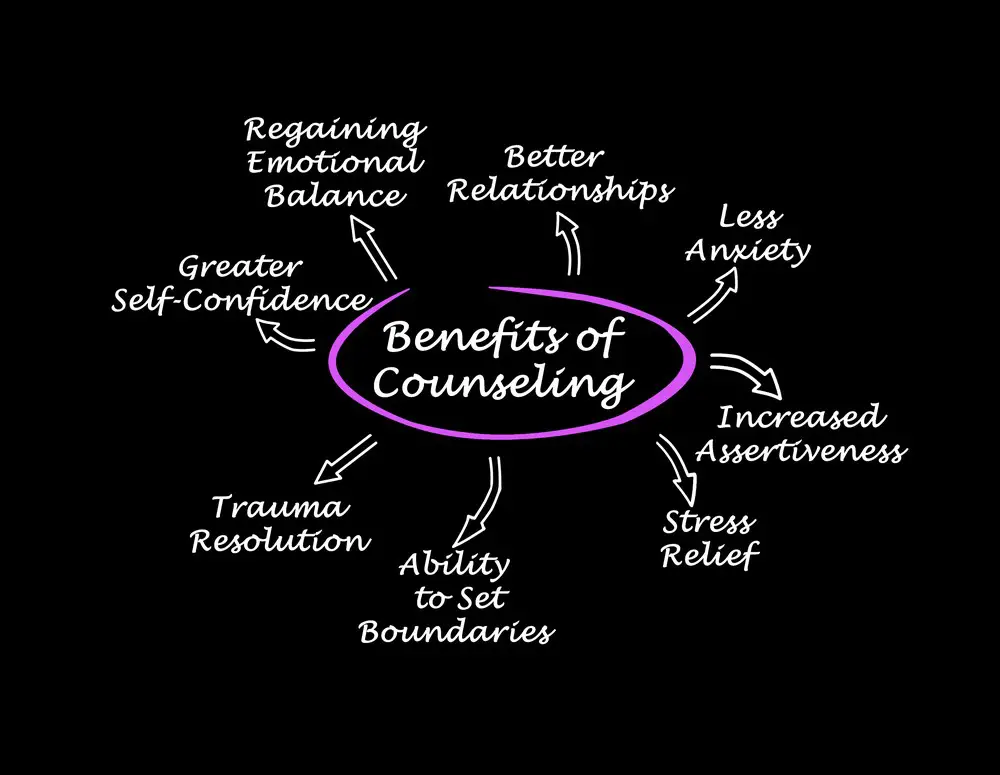
Signs That Therapy May Be Needed for a CSA Survivor
Recognizing the need for professional help is a significant step toward healing. Here are some indicators that it might be time to seek therapy:
- Persistent Emotional Turmoil: Experiencing ongoing feelings of sadness, anger, guilt, or shame that interfere with daily life.
- Flashbacks and Nightmares: Regularly relive traumatic events through intrusive thoughts or dreams.
- Avoidance Behavior: Steering clear of places, people, or activities that remind you of the traumatic experience.
- Relationship Struggles: Experiencing difficulty in forming or maintaining meaningful relationships due to trust issues or emotional walls.
- Physical Symptoms: Experiencing chronic health issues like migraines or gastrointestinal problems, which can sometimes manifest as emotional stress.
Setting Goals for Therapy
Once you’ve decided to seek therapy, it’s useful to set some objectives to guide your healing process:
- Emotional Regulation: Learning to manage overwhelming emotions like anger, shame, and sadness.
- Processing the Trauma: Working through the traumatic memories in a safe and controlled environment.
- Building Coping Mechanisms: Acquiring new tools to deal with stressors or triggers that may arise.
- Improving Relationships: Working on communication and trust issues to foster healthier interpersonal relationships.
- Empowerment: Gaining a sense of control and strength to make positive changes in your life.
Recognizing Progress
Healing is not linear, but some signs indicate you’re on the right track:
- Reduced Symptoms: Noticeable decreases in anxiety, depression, or other emotional distress linked to the trauma.
- Improved Relationships: Finding it easier to connect with people and experiencing more fulfilling relationships.
- Positive Coping: Utilizing new coping mechanisms when faced with triggers or stressors instead of reverting to old, harmful behaviors.
- Better Emotional Control: Experiencing fewer emotional outbursts and having a greater sense of emotional stability.
- Renewed Sense of Self: Beginning to feel more like “yourself” and taking pleasure in activities you once enjoyed.
Key Takeaways:
- Knowing when to seek therapy is crucial; clear indicators can help you make that decision.
- Setting achievable goals for your therapeutic journey can guide you toward meaningful progress.
- Recognizing the signs of improvement can be encouraging and motivating as you navigate the complexities of healing from CSA.
Remember, therapy is a deeply personal experience, and what works for one person may not be applicable to another. Nonetheless, being proactive about your mental health can significantly impact your overall well-being and quality of life.
Frequently Asked Questions
What is the meaning of CSA survivor?
CSA stands for Childhood Sexual Abuse. A CSA survivor has experienced sexual abuse during their childhood and has carried the impact of that trauma into their adult life. Survivors often show great resilience in coping with the lasting effects of their abuse.
What are common symptoms experienced by survivors?
Survivors of CSA may experience various symptoms, including:
- Anxiety
- Depression
- Low self-esteem
- Trust issues
- Difficulty in relationships
- Sexual dysfunction
You need to understand that each survivor’s experience is unique so the symptoms may vary from person to person.
How does CSA affect mental health?
CSA can significantly affect mental health, increasing the risk of depression, anxiety, and PTSD / CPTSD. The trauma can also affect survivors’ self-image, self-worth, and ability to form trusting relationships. Addressing these mental health challenges is an integral part of the healing process.
Can CSA survivors recover and heal?
Yes, CSA survivors can recover and heal. Recovery involves multiple steps and often requires professional therapy or counseling. It’s important to note that healing is an individual journey and may take a different amount of time for each person.
What coping strategies can help survivors?
Coping strategies that may help survivors include:
- Seeking therapy or counseling
- Participating in support groups
- Building a strong support network with friends or family
- Practicing self-care and self-compassion
- Learning coping techniques, such as mindfulness or grounding exercises
Finding strategies that work best for you and your unique situation is crucial.
Where can a CSA survivor find support?
Many resources and organizations are available to support CSA survivors, such as Courageous Survivors or Survivors of Childhood Sex Abuse (SCSA). These groups offer resources, therapy, and community support for individuals looking to share their experiences and work toward healing.
About Jacob Maslow
After surviving the traumatizing events of 9/11, I took it upon myself to heal through helping others. I’m the primary caregiver of my children and understand from first-hand experience the lonely paths you have to walk as a partner and parent when leaving an unhealthy relationship.
We’re all echoing in a dark space that doesn’t have to be this empty, and that’s been my mission since finding solace and recovery in therapy: To help comfort others who are still in shock and at the prime of their struggle.
I came across BetterHelp after searching for this type of community. I wanted to belong to a body of proactive therapists and supportive therapy veterans that allowed me to see other sides of the story.
It was unconventional, and that’s what attracted me most. During my most challenging times, when my ex-wife completely cut me off from my children, I found comfort and clarity through BetterHelp.
Instead of being chained to a strict therapist recommendation, I was in charge of who I felt understood my struggle most. That allowed me to find my true peace, as I was reunited with those who read behind my words and had first-hand experience with my trauma.
Recovery is a choice; with BetterHelp, that choice will be a few clicks away. You can join their couples-oriented platform, Regain.us, for those stuck with family estrangement and toxic relationship patterns.
- Breaking the Silence: Why Men’s Mental Health Matters More Than Ever - April 15, 2025
- How to Transform a Home’s Patio Space into a Relaxing Space - March 23, 2025
- 5 Strategies to Use a Cell Phone to Help Manage Your Stress - March 23, 2025
This site contains affiliate links to products. We will receive a commission for purchases made through these links.

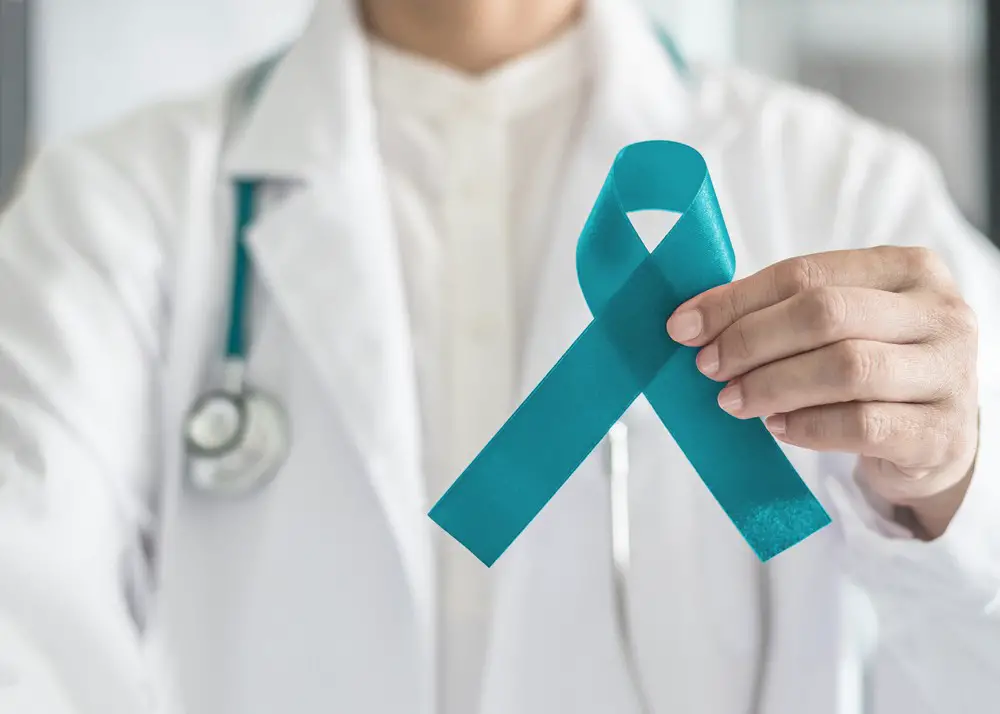
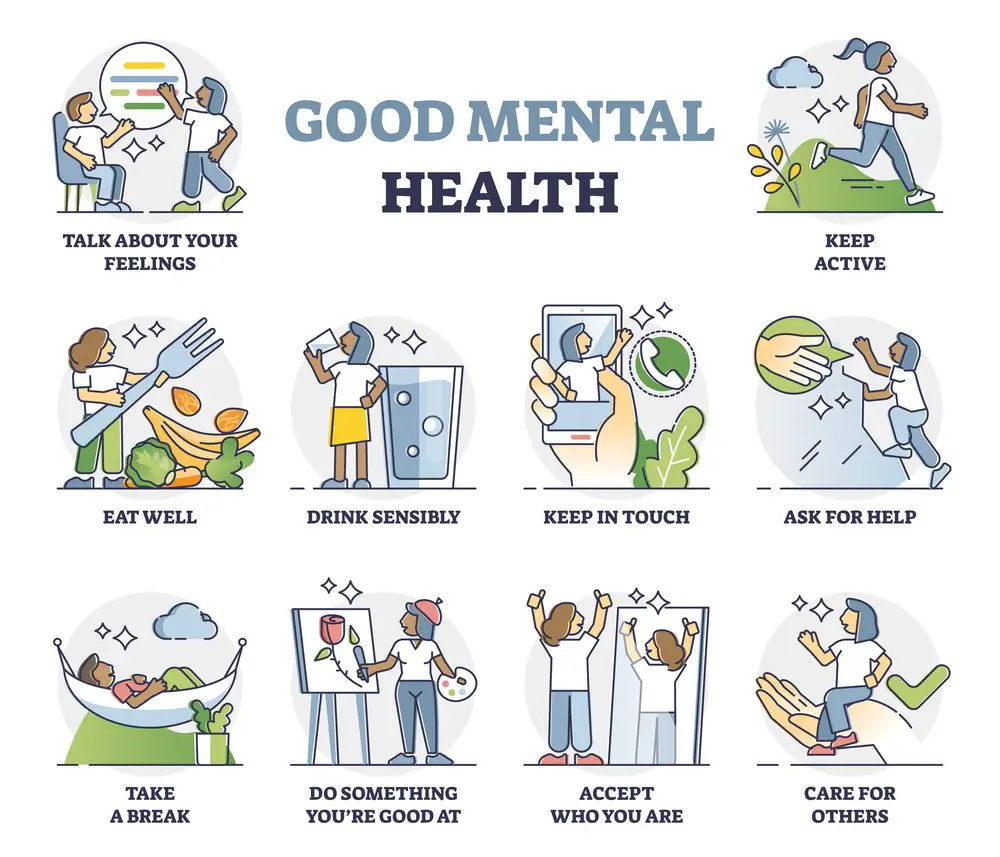 Coping Mechanisms for Survivors
Coping Mechanisms for Survivors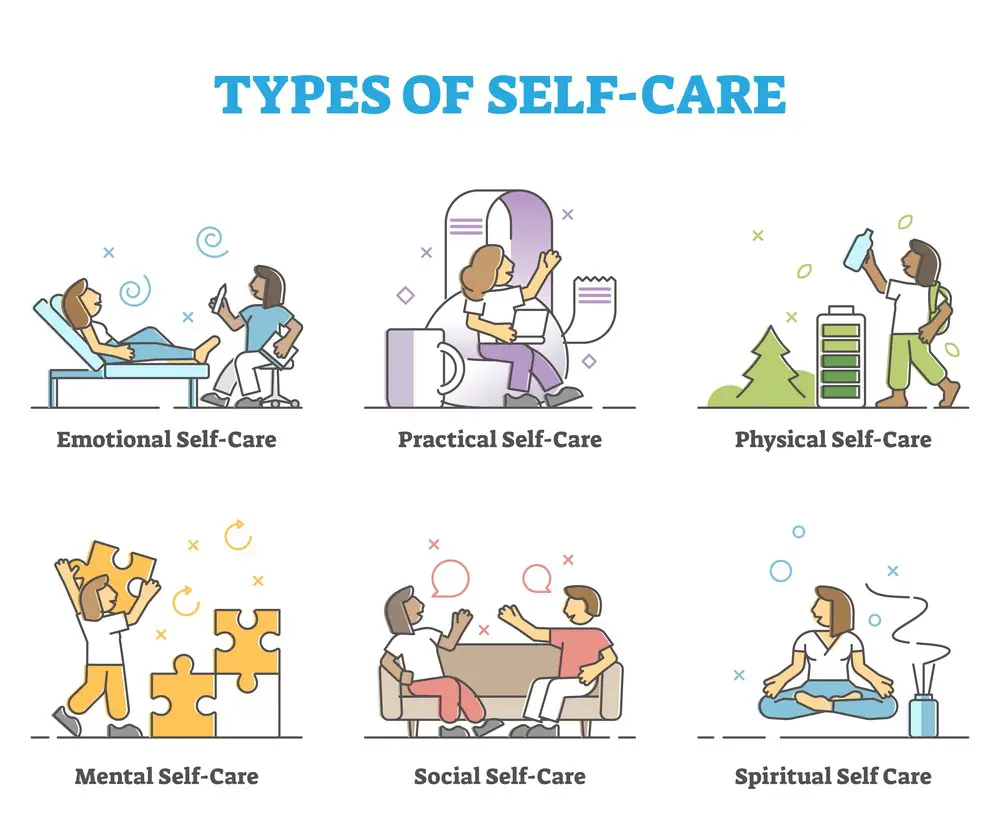 Self-Care Techniques
Self-Care Techniques Speaking Out About CSA
Speaking Out About CSA